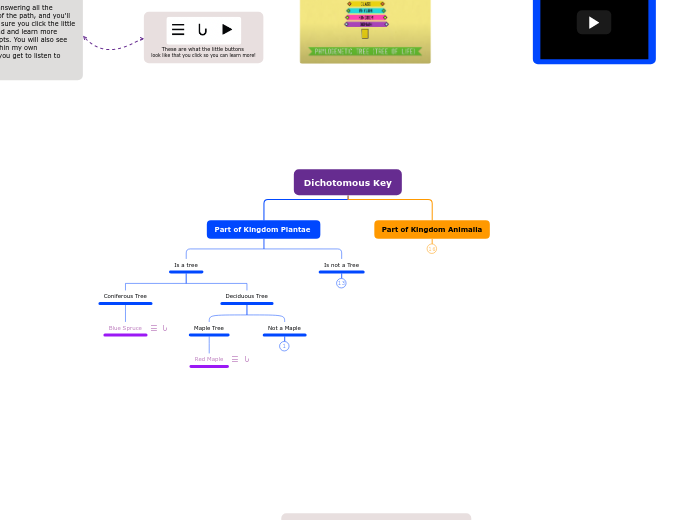Dichotomous Key
Part of Kingdom Plantae
Is a tree
Coniferous Tree
Blue Spruce
Deciduous Tree
Maple Tree
Red Maple
Not a Maple
Is not a Tree

Is a tree
Coniferous Tree
Blue Spruce
Blue SpruceThe Blue Spruce, also scientifically called Picea pungens, is a super cool tree that can grow to be ginormous like the one I found on my street in the photo above! Blue Spruces are native (belong to) to North America and have been growing in Canada and all around Ottawa for thousands of years! The blue spruce is a big coniferous tree, which means that they keep their needles all winter long. It can usually grow up to 15 meters tall or sometimes even taller. It has tons of branches shooting out of its trunk horizontally, and thick bunches of needles all along the branches…so be careful not to poke your fingers! A cool thing about blue spruces, or coniferous trees in general, is that they use seeds to reproduce. Blue Spruces fall into the category of gymnosperms, which sounds like a super confusing word, but this simply means that they use cones to spread their seeds. For this to work, a blue spruce will start making male cones once it’s around 20 years old. Male cones make tons and tons of tiny grains of pollen through a system called meiosis. All these little particles of pollen get whooshed away in the wind and connect with a female cone on another tree. When this pollen makes contact with the female ovule, a connection called fertilization occurs. After fertilization a little seed starts to grow and shape what you know as a pine cone. When ready, the pinecones will release themselves and the seeds will fly down to the soil and hopefully start growing a brand new Blue Spruce!
dDeciduous Tree
Maple Tree
Red Maple
Red MapleThe Red Maple, or the Acer rubrum in fancy terms is a very common tree in Ottawa and is also a very pretty one! Acer rubrum is in kingdom plantae, order sapindales, family sapendaceae and genus acer. This tree’s leaves is what our country's flag is based off of and it is a deciduous tree, meaning that it loses its leaves every winter, which is great because that means it becomes super pretty and multicoloured during the fall! Have you ever thought about how the mighty maple tree is able to reproduce? I’ll tell you now, it’s pretty cool! Since the Red Maple is deciduous, this means it’s an angiosperm (have flowers and or fruit to enclose their seeds). Maple trees will begin to reproduce around 50 years old. For this to happen, when spring comes along, the Red Maple will begin to regrow its leaves after a long and cold winter. Then, it will start to grow little flowers along the tree, which bees and pollinators love. About halfway through the summer, the flowers will fall off the tree and it will grow a small fruit, which are V-shaped and are also known as helicopters in the kid world! These helicopters drop off the tree and fly to the ground. They’re special because encased in these helicopters are little seeds that germinate and then start to grow into trees!
dNot a Maple
Is not a Tree